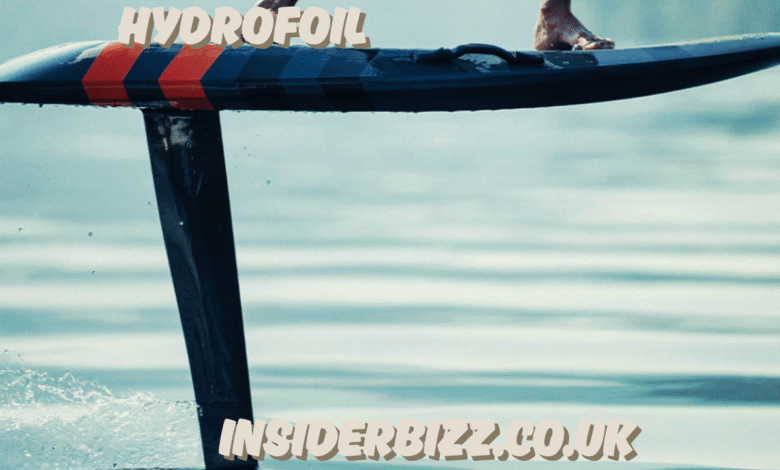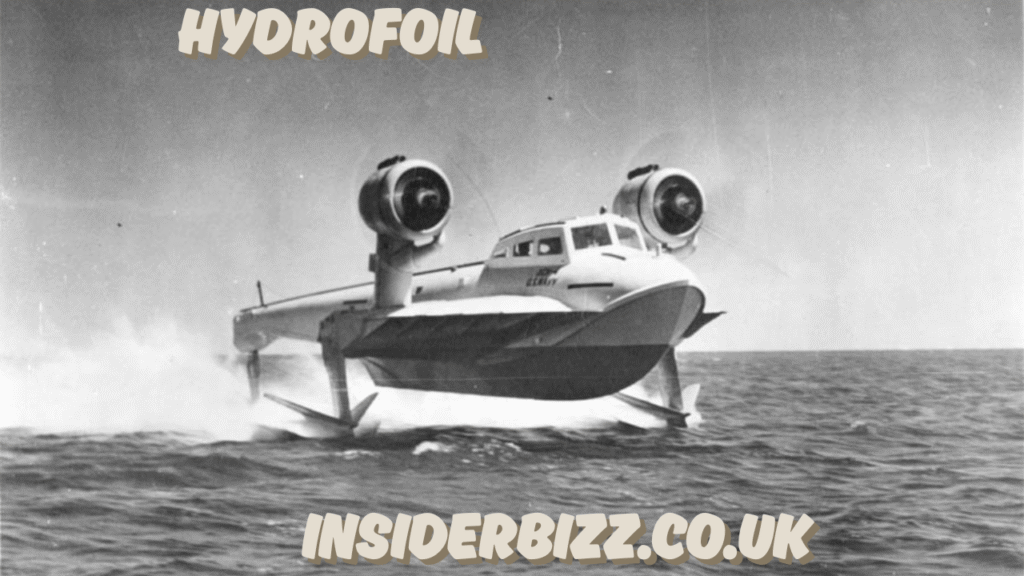
Hydrofoil, ??, Understanding the Fascinating Science and Applications of Hydrofoil Technology
Introduction to Hydrofoil, ??
The term hydrofoil may evoke thoughts of futuristic watercraft skimming effortlessly above the water’s surface. But what exactly is a hydrofoil? At its core, a hydrofoil is a lifting surface, or foil, that operates in water. Much like an airplane wing, it generates lift, allowing a boat or other watercraft to rise above the water as it gains speed. The result is a smoother, faster, and more efficient ride. In this article, we’ll explore the mechanics, history, benefits, and future of hydrofoils — and answer the question: hydrofoil, ?? Why is it so revolutionary?
The Basic Mechanics of a Hydrofoil, ??

To understand the power of a hydrofoil, it’s important to grasp how it works. A hydrofoil consists of wing-like structures mounted on struts below a boat’s hull. As the vessel speeds up, water flows over these wings, creating lift and pushing the hull out of the water. This reduces drag significantly, as less of the boat is in contact with the water.
There are different types of hydrofoils — surface-piercing, fully submerged, and canard-type foils, each with its own behavior and design advantages. But all share the same essential function: to enhance speed, efficiency, and smoothness by lifting the craft above choppy waters.
Historical Development of Hydrofoil Technology

The idea of hydrofoil technology dates back over a century. Italian inventor Enrico Forlanini is credited with creating the first working hydrofoil in the early 1900s. His experimental boat used airfoils to lift the hull and achieved impressive speeds for the time.
During the 20th century, military and commercial interest in hydrofoil vessels grew. Alexander Graham Bell even contributed to the development of early hydrofoils in the U.S. In the post-war era, navies experimented with hydrofoil ships for patrol and high-speed transport, but their high maintenance costs limited widespread use.
Nonetheless, the concept continued to evolve. Today, hydrofoils are found in racing yachts, ferries, personal watercraft, and surfboards, signaling a full-circle moment in their technological journey.
Types of Hydrofoil Applications
1. Hydrofoil Boats
These are the most traditional form of hydrofoil applications. Whether used in racing or ferry systems, hydrofoil boats are designed for speed and reduced fuel consumption. By lifting the hull out of the water, these boats can cruise faster with less resistance.
2. Hydrofoil Surfboards (Foil Boards)
Hydrofoil surfboards, or foil boards, have become a huge trend in watersports. They allow riders to glide above the water’s surface even on small waves, offering a unique and smooth ride unlike traditional surfing.
3. Hydrofoil Ferries
In high-traffic coastal or island routes, hydrofoil ferries have become vital due to their speed and reliability. These crafts are often used in Asia and Europe for daily transportation.
4. Hydrofoil Yachts
High-performance sailing yachts like those in the America’s Cup now use hydrofoil technology. These yachts “fly” above the water at astonishing speeds, revolutionizing competitive sailing.
Benefits of Hydrofoil Technology
One might ask: hydrofoil, ?? Why all the hype? Here are some compelling advantages:
- Reduced Water Resistance: With most of the hull lifted, hydrofoils dramatically decrease drag, enabling greater speeds with less energy.
- Fuel Efficiency: Less drag equals less fuel consumption — a key advantage for commercial and personal users.
- Smooth Ride: Hydrofoils glide above waves, offering a smoother ride, especially in choppy conditions.
- Environmentally Friendly: With lower fuel consumption comes a reduced carbon footprint — an essential benefit in today’s environmentally conscious world.
- Exciting Water Sports: From electric hydrofoil boards to kite foils, the recreational water sports world has seen a major innovation surge thanks to hydrofoil designs.
Challenges and Limitations of Hydrofoil Use
While hydrofoil systems have many benefits, they are not without drawbacks.
- Cost: Building and maintaining a hydrofoil vessel can be significantly more expensive than traditional boats.
- Maintenance: Hydrofoils require precise engineering. They are more susceptible to damage from floating debris or shallow waters.
- Training Required: For water sports, hydrofoil boards are harder to master than conventional equipment. The lift and control add complexity.
- Limited Usage Conditions: Hydrofoils perform best in certain conditions. Extremely rough seas or shallow waters can reduce their efficiency or make them unusable.
Innovations in Hydrofoil Technology
Hydrofoil technology continues to evolve. Recent developments have introduced electric hydrofoils—both boats and surfboards—that combine battery-powered motors with foil designs to deliver quiet, efficient propulsion systems. Companies around the world are exploring AI-assisted balance systems for improved stability and performance.
Moreover, the competitive sailing world continues to push boundaries. The use of computer modeling and lightweight composite materials has led to highly optimized foil shapes that can lift boats at angles and speeds once thought impossible.
Hydrofoil, ?? The Future Outlook
So what does the future hold for hydrofoil technology? The increasing push for green transportation options may favor hydrofoil boats, especially in ferry services and cargo transport. Imagine large container ships that skim over ocean surfaces, reducing their environmental impact significantly.
In the world of recreation, hydrofoil boards are likely to become more mainstream as prices decrease and technology improves. Electric foil boards are already gaining popularity among casual users and adventurers alike.
The military may also revisit hydrofoil technology for fast patrol crafts and stealth missions. With modern materials and smart systems, hydrofoil vessels could become more viable than ever before for high-speed, low-detection transport.
Frequently Asked Questions About Hydrofoil, ??
Q1: What is a hydrofoil used for?
A hydrofoil is used to lift a vessel’s hull above water to reduce drag and increase speed. Applications include boats, ferries, surfboards, and racing yachts.
Q2: Is a hydrofoil hard to ride?
Yes, especially in surfing or foil boarding. It requires balance and coordination, but with practice, most riders can learn the technique.
Q3: Are hydrofoil boats fuel efficient?
Yes. Because hydrofoils reduce drag significantly, boats require less energy or fuel to travel at high speeds, making them more efficient.
Q4: Can hydrofoils be used in shallow waters?
No, hydrofoils extend below the hull, so they’re not suitable for very shallow or debris-filled waters where the foils could get damaged.
Q5: How fast can hydrofoil vessels go?
Hydrofoil ferries can reach speeds over 45 knots (about 50 mph), while racing yachts and electric hydrofoil surfboards can exceed 60 mph under optimal conditions.
Q6: Are hydrofoils safe?
Yes, when used correctly and under proper supervision. However, high speeds and foil blade exposure mean users must exercise caution, wear protective gear, and maintain equipment regularly.
Conclusion: Hydrofoil, ?? Why It Matters
In a world striving for greater efficiency, sustainability, and innovation, hydrofoil technology stands out as a promising solution in both transportation and recreation. From sleek racing yachts to futuristic electric surfboards, the applications of hydrofoil design are expanding rapidly. Although there are challenges to its widespread adoption, the growing interest in green solutions and high-performance watercraft makes the future of hydrofoil technology undeniably bright.
Also read : Unveiling the Secrets of Tarnplanen: Mystery, Purpose, and Possibilities



